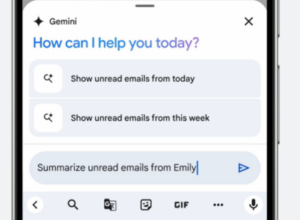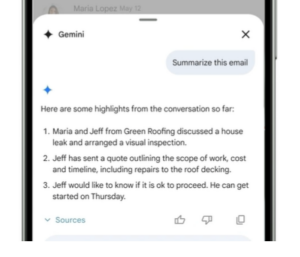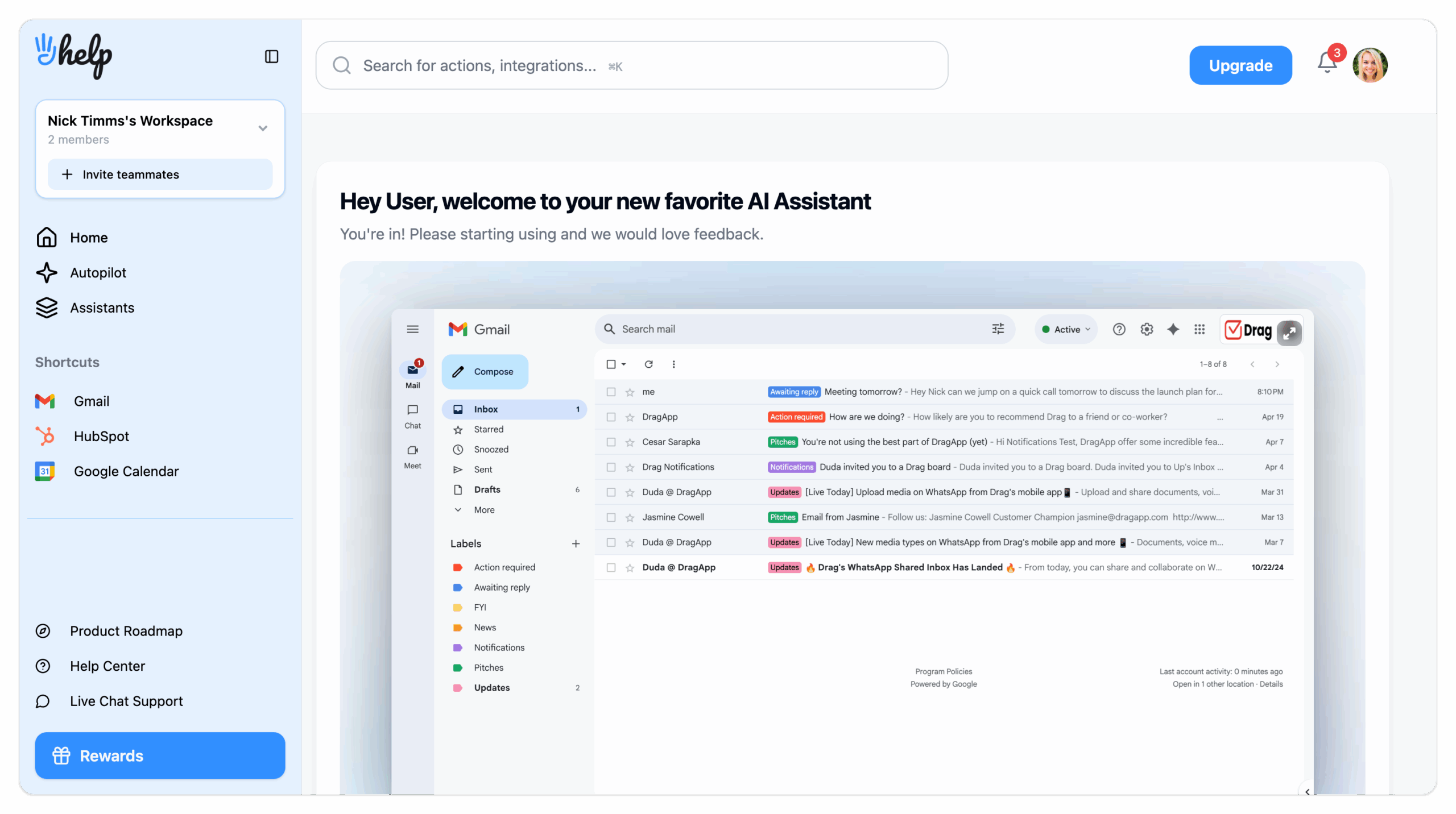Managing your inbox in 2025 isn’t just about response time metrics and smart scheduling. It should work for your individual needs. That’s why AI in Gmail has become such a popular solution. With the right choice, your inbox becomes less of a time concern and more of a strategy.
New smart tools and resources have opened up possibilities for Gmail, going from standard inboxes to powerful productivity spaces. Both entrepreneurs and growing teams can benefit from AI tools to bring extra productivity and optimization to their email-based tasks. AI for Gmail can be useful to automate repetitive tasks, streamline workflows, and enhance customer service with less time and manual effort.
However, learning to leverage AI for Gmail can be time-consuming, especially if your business has specific AI needs. This guide will help you by comparing tools, analyzing actual use cases, and walking you through the pros and cons of each option.
Want to start automating your Gmail inbox in 2025? Keep reading to find out more!
Why AI for Gmail matters right now
AI has quickly integrated into multiple business areas and platforms. Gmail is no exception. Considering most businesses rely on email for internal and external communication, it’s crucial to understand if and how AI can be useful.
In 2025, AI for Gmail is focused mainly on inbox maintenance. Most users receive a high volume of emails on a daily basis, and they often need quick responses. AI can help by:
- Summarizing long conversations about current projects and tasks;
- Highlight important interactions;
- Signal follow-ups;
- Automate repetitive tasks;
- Prioritize your inbox;
- Help with crafting messages.
Whether you’re dealing with more client messages than usual, trying to keep up with your market news, or simply having to find your urgent tasks among low-priority emails, AI tools can help you.
For instance, if you need to sort through your inbox to find relevant messages, here’s a prompt:
“My inbox is overflowing with low-priority messages, but I need to identify the most important ones. Can you help me find the emails including my frequent senders?”
There are built-in resources with AI for Gmail, and even more options available as third-party software. Now, more than ever, it’s easier to turn your inbox into something that works for you, not against you.
How can AI for Gmail help with email overload?
Email use has long been a hurdle for many professionals. While essential to keep track of project progress and a useful tool for interacting with clients, your inbox might take too logn to get through.
A study titled “Analysis of email management strategies and their effects on email management performance” (P. Letmathe and E. Noll), published by the International Journal of Management Science, looked into the main email management methods and their benefits. According to the researchers, the top-rated ways to organize email in a professional setting are:
- Inbox zero: keeping a clear (or almost clear) inbox on a regular basis
- To-do list: using your inbox for project and task management
The study concluded that “these strategies help email users to reduce their cognitive load and, therefore, to relieve their working memory so that they can concentrate on specific tasks”.
AI for Gmail can help on both accounts. By implementing data-driven automation tools, users can get through more emails in a shorter time frame, which keeps their inbox decluttered.
Additionally, AI tools can summarize long email threads, which is a good way to stay updated on ongoing team projects and tasks if your workflow is mostly email-based.
For example, if you’ve been away from your inbox for a while but need to be in the loop about a project, here’s a prompt idea:
“Summarize all emails and key updates related to [Project Name] from the past [time frame] so I can quickly catch up.”
Are there built-in AI features in Gmail?
Yes! Google has its own AI platform, Gemini AI, which is integrated into Gmail for everyone at no cost. Gemini can help with:
- Email summarization: click a button and get the updates you need on long conversations with your team
source: Google Help
- Writing assistant: suggested options based on message context
- Inbox search: ask Gemini to find information on your emails

source: Google Help
- Follow-up reminders: if you haven’t interacted with a conversation in a while, Gmail will alert you
Which workflows can use AI for Gmail to optimize?
All teams and workflows can benefit from AI tools, as long as they use them strategically.
Sales and marketing
AI for Gmail can speed up customer outreach by suggesting personalized replies. Summaries can help you detect and follow up with valuable leads as well. With less time spent on repetitive communication, teams can focus more on closing deals.
Additionally, AI tools can help you analyze ROI on emails and develop a marketing strategy based on machine learning for different customer profiles, which fosters connection. Here’s a prompt example you can use with Gemini or any AI for Gmail:
“I need a marketing email for the launch of [Product name]. It should be two to four paragraphs long, with a friendly and approchable tone.
The product is targeted for [target audience] and the key benefits are [list product specs]. The launch is on [date] and the call to action should be Shop now with a link to our ecommerce [insert link]”.
Customer service
AI cuts down on time spent organizing your inbox by identifying priority messages and suggesting fast, relevant responses. Depending on the tool, it can also automate the entire process for you when dealing with frequent queries.
Say you need to send an email to a customer who’s facing a common error with your services. A good prompt is:
“I need a customer support email reply for a common FAQ: [insert question] Please draft a clear answer with a link to the relevant knowledge base article for step-by-step instructions. Ensure the tone is helpful and friendly.”
With AI for Gmail, your customer service agents stay on top of follow-ups and provide consistent, accurate information, leading to better customer experiences.
Project management
In team settings, AI can organize your workflow by summarizing long threads, highlighting action items, and prioritizing updates. That means users spend less time digging through emails. It also keeps everyone aligned by making it easier to respond quickly and delegate tasks.
Getting started with AI for Gmail: what are the options and how to implement them?
Now that you know the benefits of implementing AI for Gmail, the next step is figuring out which method is right for your needs. The main questions you need to have in mind are:
- What should the AI tool solve?
- How does the AI tool integrate with my current workflow?
That’s important because while there are many options on the market, some might be more suited for certain tasks and projects, while others can include a lot of features at a higher cost. Keep in mind what your team actually uses and how a solution can optimize their workflow specifically.
The AI for Gmail options are:
1) Google Workspace resources
Gemini is Google’s built-in AI resource. Beyond the Gmail add-ons, it has also been implemented on other Google Workspace programs, helping users automate repetitive tasks across the board.
Additionally, Gemini has a deep research tool to which users can upload files to get important data. That can be useful for ROI analysis and market research.
There’s a free version with limited prompts, but users can get more integration with subscriptions, starting at $19.99/month.
What are the cons of using built-in AI for Gmail?
It’s worth noting that Gemini is still limited in its Gmail integration. It can help with quick replies and overall inbox productivity, but it still requires user input and doesn’t include much space for customization.
Additionally, it’s individual, so if you’re working as a team, you can’t share your automation with collaborators. The context learning is also limited and not as flexible as other options.
2) Automation plug-ins
Another way of implementing AI for Gmail is by using third-party plug-ins that automate repetitive tasks for you. The options vary depending on your workflow needs.
One example is Mailtrack. This tool helps users schedule messages and check if they have been opened, which can be crucial for sales and marketing teams.
Linguix, on the other hand, is a plug-in that checks for grammar mistakes and offers multilingual AI suggestions for better emails. That’s a clear benefit for global customer support teams.
Are automation plug-ins a good option for a company’s workflow?
Yes, but it depends on what you need. Most AI plugins were developed to help with a specific part of email optimization, so finding software that fulfills your automation needs is key.
The cost is another point of attention. Some plug-ins offer free plans, but most customization options are available only on paid subscriptions. Make sure the cost x benefit is positive for your team before committing.
3) AI email assistants
The most complete way to integrate AI for Gmail is by using an AI email assistant. AI assistants offer a fuller workspace experience for your inbox by automating the entire workflow, including:
- Triaging emails by priority
- Writing context-based replies
- Auto-scheduling team meetings
- Alerting users to urgent matters
This method is particularly useful for teamwork and accounts with a higher volume of messages.
Since they fulfill multiple needs, they can often be more cost-effective than using multiple Gmail AI plugins for a variety of tasks, while also being easier to learn.
How are AI email assistants better for workflow productivity?
In short, they learn your email behavior and offer customized help and automation along the way. Message drafts have your tone and writing style, and you’re in control of automation rules and priorities.
Unlike extensions and Gemini, AI email assistants don’t wait for your prompts. Instead, they clear up and organize your inbox for you so that you have time to focus on tasks that matter the most.
Hey Help: a flexible, powerful solution for your inbox
Our solution, Hey Help, is an AI assistant developed to help users gain control of their email-based workflow. It’s built on Gmail, so it doesn’t require a learning curve. But it goes beyond Gemini’s AI for Gmail. The main benefits of using Hey Help are:
Email triage
Your messages are automatically tagged by priority and categories before you open your inbox. AI archives, labels declutters your inbox for you.
Context-based replies
Hey Help learns your email writing style and the context of your regular communication. That means the AI email drafts aren’t generic, but tailored to your workflow’s needs.
Choosing the right AI for Gmail: Feature Comparison
| Gemini for Gmail | Third-party automation plug-ins | AI Email Assistants | |
|---|---|---|---|
| Pros | Built-in Gmail support, easy access, and includes deep research tools. | Task-targeted, automating certain steps of your workflow, like smart replies or scheduling follow-ups. | Learns your workflow, sorts emails by priority, and requires minimal input. |
| Cons | Basic automation only, limited context learning, and no cross-program integration. | May require multiple tools to fulfill your team’s needs. | Higher initial learning curve. |
| Collaboration tools | Individual use only. | Limited, varies by tool. | Developed for team inboxes. |
| Customization | Low, based on Gemini’s models and user prompts. | Medium, depends on the plug-in. | Adapts to your tone, rules, and team workflow. |
| Cost | Free tier available, with most features on the paid plan, at $19.99/month | Many offer free plans, but advanced features are paid. | Paid, but can be more cost-effective than using multiple plug-ins. |
| Use cases | Individual Gmail users who need basic automation. | Teams with specific email tasks | High-volume users or teams seeking full inbox automation |
Making AI Work for Your Inbox in 2025
AI for Gmail isn’t just a market transformation. It helps your individual and team inbox use. So much of our work is tied to email, so reducing clutter and improving productivity is key. Whether you’re using Google’s built-in Gemini, task-specific plug-ins, or full AI email assistants, an AI-based solution can make your inbox less overwhelming and more focused.
It should integrate easily into your routine and automate repetitive tasks so that you free up time to focus on developing your business and its future strategies.
What you need to know about AI for Gmail
Is AI in Gmail free or do you have to pay for it?
Gmail’s built-in AI, powered by Google Gemini, is free for basic features such as email summaries and smart replies. If you need more advanced tools and Workspace integration, paid plans start at $19.99/month.
Can Gmail AI tools understand what my emails are really about?
Yes, certain AI tools can understand the context of your emails. Gemini, Google’s built-in Gmail AI chatbot, handles basic prompts. Full AI email assistants can learn your tone, writing style, and email strategy to generate smarter, more personalized responses.
What is the best AI for Gmail if I’m working with a team?
The best AI option for teams using Gmail is a dedicated AI email assistant like Hey Help. It can sort through messages in shared inboxes, automate follow-ups, and suggest custom responses.
What does an AI email assistant do in Gmail?
An AI email assistant for Gmail automates your entire inbox workflow. It can sort emails by priority, draft replies in your tone, summarize conversations, and even schedule meetings without you having to manually prompt it. It’s the best option if you get a high volume of emails or need shared inbox support for a team.



